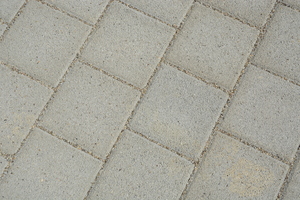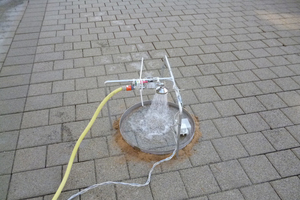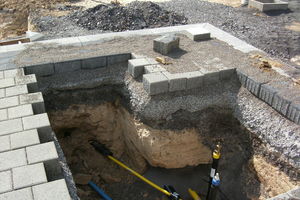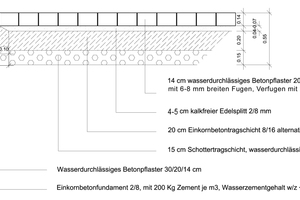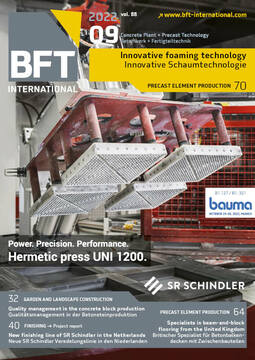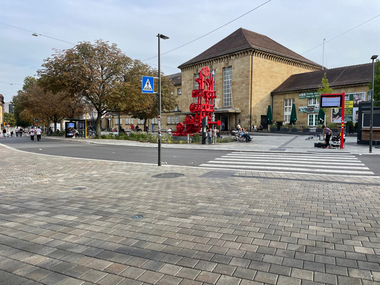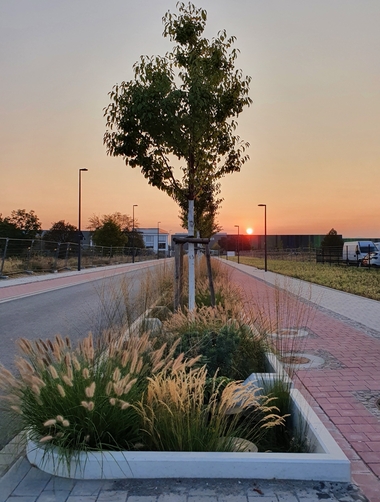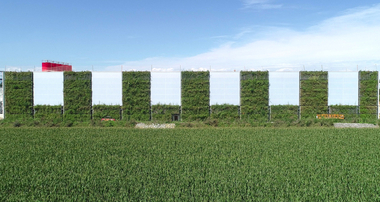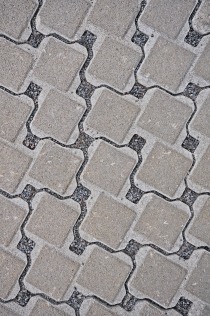Stuttgart Sickerstein pavers for the “sponge city”
At the very latest, the heavy rain events that occurred at the end of the summer made it evident that an increasing number of the municipal sewerage systems was no longer able to drain the resulting water quantities. Increasing surface drainage intensity over uncontrolled flow paths can then lead to local flooding, causing in some cases devastating damage to infrastructure and buildings. To counteract these effects of climate change, adjusted drainage and climate-control concepts are urgently needed for our cities, with measures for a climate-friendly urban development.
The report of the German Federal Institute for Research on Building, Urban Affairs and Spatial Development (BBSR), “Preparedness for flooding and heat by urban development,” refers to these measures as the principle of the “sponge city.” It is aimed at locally absorbing – the same as with a sponge – rainwater in cities and storing it instead of simply channeling and draining it. This would prevent flooding in heavy rain events, improve urban climate and promote the health of urban trees. The Stuttgart permeable paver developed by the blockmaker Adolf Blatt in Kirchheim am Neckar in Germany has proved for many years to be a good solution for draining rainwater on paved surfaces. Numerous examples show that this open-structured concrete paving system is able to provide sustainable and permanent water-permeable surfaces without increasing drainage into sewers.
The concept of the sponge city includes measures for adjusting to the climate in large cities through a combination of retention, unsealing, decoupling, infiltration and evaporation of rainwater. Dipl.-Ing. Heider Auner of the civil engineering firm of the same name in Winnenden in Germany, describes that stabilization with the Stuttgart permeable paver takes these five measures exactly into account.
Stuttgart permeable paver retains rainwater
“Retention of precipitation is recognized as the usual common measure for reducing peak drainage. Rainwater-retention basins, as so-called end-of-pipe solutions, are also built for draining urban-area rainwater for relieving both waterways and sewers. Decentralized retention directly where the precipitation occurs is in any case required. It is the only solution for minimizing risks posed by heavy and extreme precipitation events. Because the Stuttgart permeable paver is made of close-textured concrete, it has been proven to easily comply with specified values for water permeability of 540 liters per second and hectare, demonstrably over a period of at least 10 years. This corresponds to twice the design rainfall and means that there will be hardly any surface drainage even with heavy rainfall events,” says Auner.
Permeable paver infiltrates clearly more than specified
The water-permeable paving system from the company Blatt accomplishes desealing and decoupling as well: “Areas paved in this way are regarded as being desealed and are ideally not connected to the sewerage system,” continues Auner. Precipitation, as the name suggests, infiltrates through the Stuttgart permeable paver into the structural layers below.
“The DIN requires an infiltration performance of 270 liters per second and hectare only. However, since Blatt manufactures the paver to the WD guideline, long-time infiltration performance lies at a minimum of 540 liters per second and hectare, which is therefore clearly above the values specified in the standard. In connection with a system of troughs and trenches, reduction of drainage, as a rule, succeeds so well that a connection of areas to the sewers is not needed, even in poorly porous soils,” declares Auner.
Water-permeable sub-base and basecourse as prerequisite
But are areas paved in this manner sustainably permeable? Critics claim that fouling renders infiltration unfeasible even after only a short time. Heider Auner replies to this: “Even if heavier fouling does occur on the surface, the water permeability of the pavers can be completely reinstated by means of a flushing-suction method. An important prerequisite for durable infiltration performance is, however, that the upper pavement structure below the block pavement is water-permeable.
One mistake frequently made here is to include an excessively high portion of fine particles in the structural layers. A high lime content, for example, has the effect that structural layers consolidate too rapidly and water can hardly infiltrate. Instead of the often-implemented unbound stone and gravel course of particle size 0/45 mm, a material of particle size 2/45 mm should be preferred, which is also permitted by ZTV SoB-StB 20.
Depending on the loading situation and the subgrade, installation of a structural layer of drain concrete or drain asphalt on top offers a solution,” explains Auner.
A large part of the water evaporates through the surface
Stuttgart permeable pavers have demonstrated for many years and in numerous projects (e.g. S-Neckarpark, the new Hohlgrabenäcker housing development and the environs of the MB Arena) that their use in surface paving provides a good contribution to the concept of the sponge city.
This manner of surface stabilization is an important building block in the sponge city concept. In combination with other measures – such as green roofs, green façades, trough and trench systems, sunk beds as well as creative landscape design – the concept can be implemented with sustainable effect.
CONTACT
Adolf Blatt GmbH + Co. KG Betonwerke
Am Neckar 1
74366 Kirchheim (Neckar)/Germany
+49 7143 8952-0

